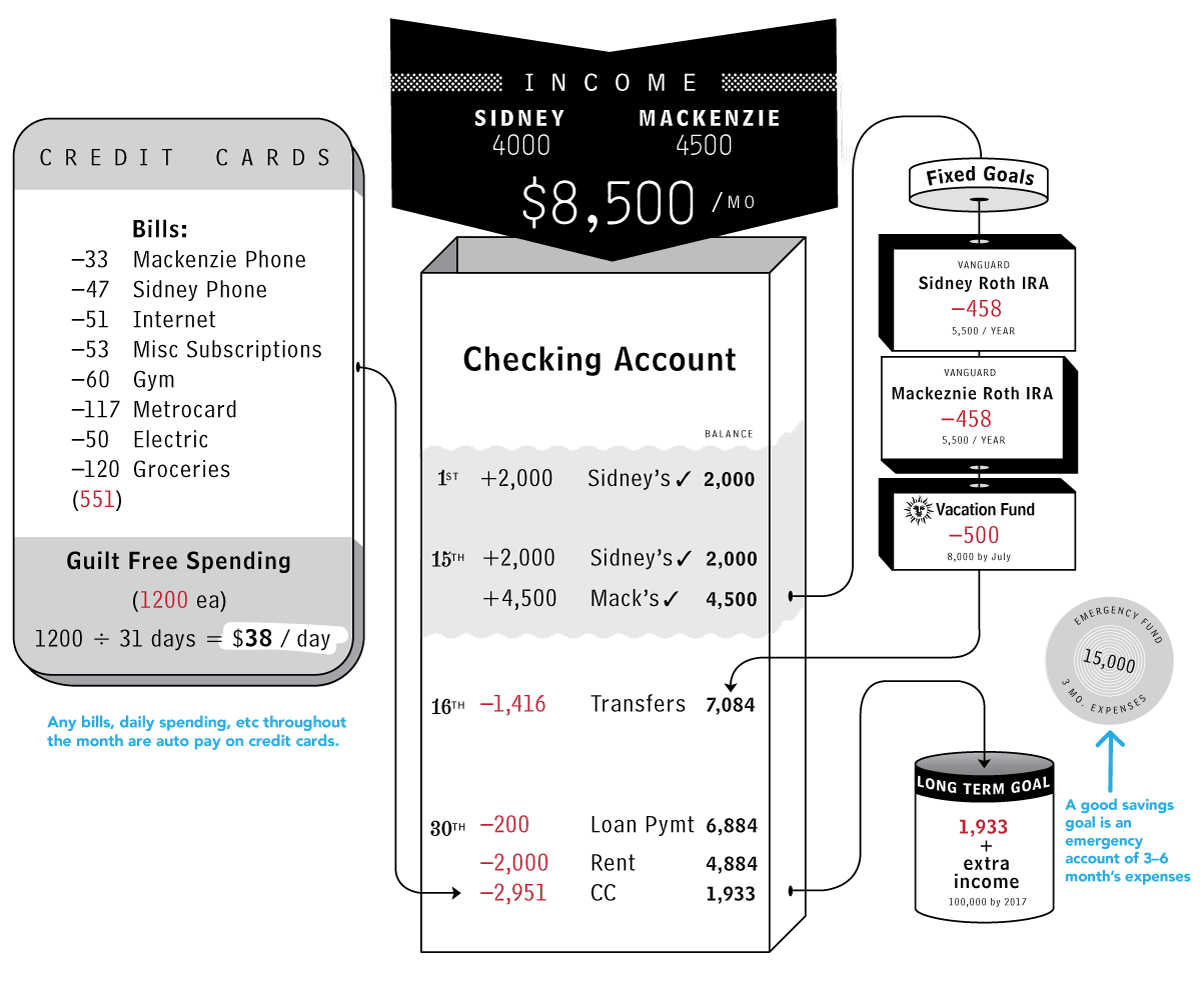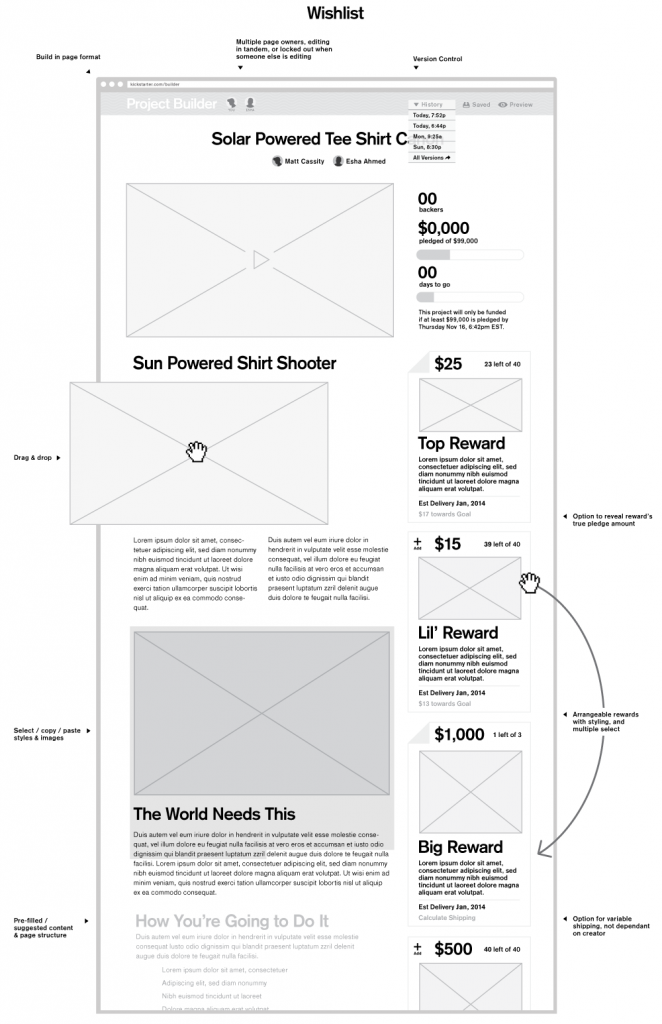I’ve read and listened to many books about building wealth. The big lesson is — no matter what, take charge of your money! The mistake most people make is thinking:
“I’m not rich, so I just won’t deal with my money, I’ll figure it out later when I have more.”
No. Do it now. You’re not poor, but you are thinking poorly.
Time is an incredible resource when it comes to growing wealth. Every day you wait is counting against you. Taking a few days of your life to research, learn, and institute a plan will pay off 1000-fold down the line.
Ten years ago I forced myself to listen to The Millionaire Next Door. It was incredibly boring, but the “think like a millionaire” premise stuck with me. The book surveyed 100s of millionaires and discovered the average millionaire: has a median income of $131k, does not have a flashy / high-consumption lifestyle, and employs unsophisticated investment strategies based on consistent saving.
If you need help getting started with your day-to-day money management, I Will Teach You To Be Rich outlines the steps to automate your finances and start saving. The gist is that you take the time to set it up once and you don’t have to fuss with it ever again.
Someone summed up the book thoroughly. Print it, read it, do it.
Be free of debt — an old book says “the borrower is slave to the lender.” Put everything you can towards the smallest debt you have (while making minimum payments on the rest). Keep doing that until you’ve paid them all off. While this may not make mathematical sense with various interest rates factored and what not, psychologically you get a boost by paying them off.
(via get-out-of-debt expert Dave Ramsey & his debt snowball method)
Budgets — I don’t even attempt one! The monthly strategy is simple:
- Automatically deposit into your retirement savings
- Automatically deposit into a savings acct for any specific goals
- Automatically pay your expenses (rent, util, phone, credit cards)
- Spend the rest
This is referred to as “paying yourself first.”
Saving for Retirement — 401k & IRAs are retirement vehicles, or savings accounts with special tax benefits. You can put in regular old dollars — and you can put stocks and mutual funds in these accounts. The only hitch is you can’t withdraw money from them until you hit 59.5 yrs old. If you dip into it (like in case of some major emergency), you’ll be hit with a penalty.
401ks — are typically offered by your company and allow you to invest in a limited range of stocks and mutual funds. If your company offers a match on a 401k — do enough to get the match. Why? Free money. (I’ve never had a 401k.)
Roth IRA — open one with an online brokerage (Vanguard / TD Amertirade / etc… google “Roth IRA”). Roth IRAs are good. You pay your taxes on the money first then don’t have to worry about it when you take it out at retirement age. You can put $5,500 / year in a Roth IRA. You are not allowed to contribute to a Roth if you make over $129,000 / year ($191,000 jointly), but there are other IRAs you can look into.
Again, you put stocks or funds into your retirement savings:
Stocks — are shares in an individual company. They are the riskiest investment and it’s very hard pick winners that will outperform the market as a whole. According to A Random Walk Down Wall Street, the majority of finance experts that devote all their energy and time to beating the market average fail to do so. But it’s fun to try! I own them as a hobby / gamble. Buying stocks is as simple as entering a ticker symbol into your brokerage account.
I get my stock tips this way: my friend listens to his dad talk to his broker on the phone then tells me what he says. I invest some money that I could lose without crying or going hungry and watch it go up and down. I plan on leaving those alone for at least 5 years. My strategy is buy and hold.
My experience is that just about any established company (that’s not retail) goes up if you just let it sit there. I’ve never sold any of my stocks, and I’m generally pleased with their performance.
Stocks I Own:
- ABB / ↑779% / something to do with supplying equipment to companies that drill for oil / on a tip from friend’s dad
- AVAV / ↑60% / drones / bought about a yr ago
- APP / ↓30% / american apparel / was a cheap stock and I figured what the hell
- BAC / ↑189% / Bank of America / bought low when it was in the toilet thanks to a story about $5 atm charges and the occupy protests
- CBI / ↑170% / builds big civic infrastructure things / friend’s dad
- FB / ↑120% / facebook / because I missed out on apple and google bought during the two dips after the IPO
- PHOT / ↑64% / they sell equipment and loan money to marijuana growers in Colorado / kind of a goof stock
- RPC / ↑87% / another oil services company / friend’s dad
The ones with really high percentages — I’ve owned a long time (buy & hold).
Funds — are collections of stocks. Since there are lots of different company’s stocks bundled together, the risk is spread out and lower.
Often you have to buy into a fund with a minimum of $1,000. There are two major types of funds:
- Index Funds — are a collection of an equal number of stocks across the entire market (or defined pieces of the market). The idea is you are investing in the market as a whole, and if you stay in long enough will earn the historical stock market average of 12%. They are also referred to as “passively managed funds.” (VTSMX is an example of one)
- Mutual Funds — are also called “actively managed funds,” because, unlike index funds, a manager picks and chooses a group of stocks they believe will be winners. Since the general consensus is that it is impossible to beat the market, coupled with the fees taken by the manager, and the tax fees associated with the back and forth trading done inside the funds, they are not seen as the best option.
- Watch Frontline’s The Retirement Gamble to learn more about managed funds and how much they can cost you over time (real info begins at 20m).
- If you’re looking for one stop shopping, look at Vanguard’s targeted funds that automatically re-adjust based on your age.
Fund I Own:
- VTSMX / ↑22% / vanguard total stock market index / a little bit of every stock out there
Over the long term (since 2005) I’ve had an excellent return on my investments … even though in 2008 all my gains were lost and I was in the negative. My money did the work for me!
If you want to skip all the research and just get started, do this:
- Open a Roth IRA with an online brokerage (use Vanguard for this example)
- Set up an automatic monthly contribution of $458 ($5,500 ÷ 12 mo)
- Once you have $1000 in your account, buy into the Vanguard Target Fund based on your age
- Make it so your monthly contribution automatically buys more of that fund
- Let it ride
… This way, it’ll buy when the market is high and low, which is called “cost-averaging.” If you do just this, and only this, for the next 30 years and the market averages 10% you will have $904,059. Behold the power of compound interest!
Spend a day, or a few hours a day, until you get your money in order. Even if you can’t afford $458 / mo right now (I can’t), get something invested.
And generally — remember, your income is your strongest wealth-building tool. Make it a priority to live on less than you make.














